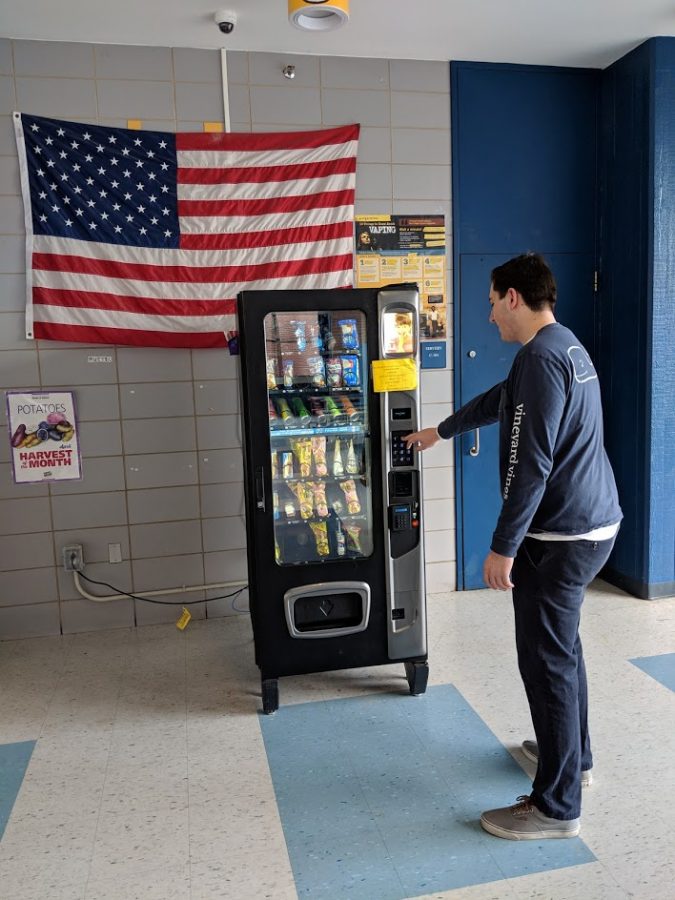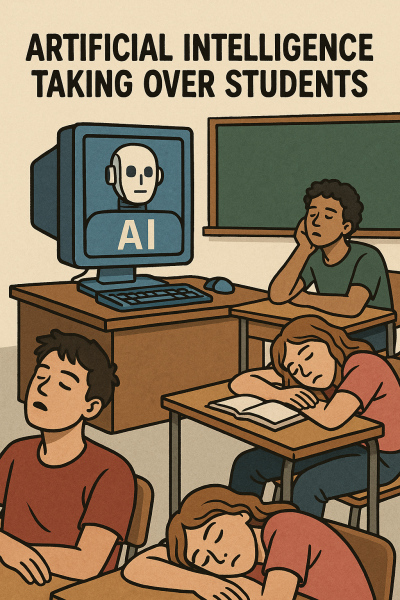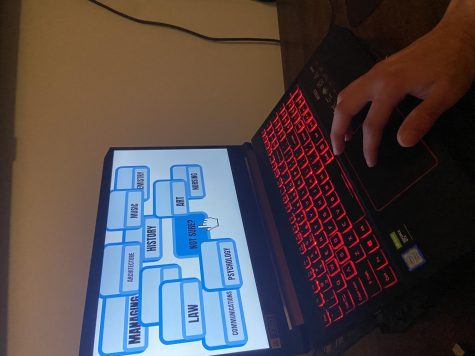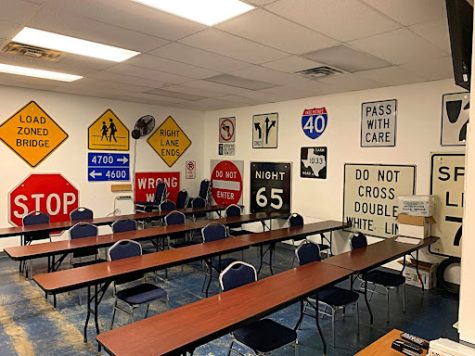Vending Machines and Their Place in High Schools
An Editorial on Vending Machines and Their Effects on High School Students
Senior Josh Lind using the the vending machine in the cafeteria to purchase a snack for third period.
Schools around the world have vending machines available for students to use, however, many people find that these vending machines are harmful to the children, dispensing foods that many believe do not belong in a students diet.
Vending machines have been around since the 1880’s when they were dispensing postcards. However, nowadays, there is a much wider range of options when you think about vending machines, from Oreos and KitKat Bars to vending machines that allow you to rent DVDs.
No matter where you are, you can throw a rock and hit at least one vending machine; they are everywhere. They tend to contain high-sugar snacks and drinks, such as various candies and drinks like Powerade or Coke. They are outside of stores such as Walmart, and especially in schools, such as Triton. At Triton, there are a few vending machines that have water, and, to my knowledge, do not work properly. However, we also have a vending machine in the cafeteria for snacks, and a few soda-like drinks, and attracts students at all times of the day, especially during lunch.
These snacks and drinks are not terrible for students health as far as some snacks go; they are not just chocolate bars and junk food. There are even vacuum-sealed apple slices for the students if they so choose, and the snacks also have to meet certain guidelines that outline the requirements for the nutritional value of the snacks sold in the vending machines. “To meet Smart Snacks nutrition standards, snack foods sold in schools are required to have: less than 200 calories, less than 35% saturated fat, 0 grams of trans fat, [and] nutritional value instead of ‘empty calories.’” (www.healthyyouvending.com)
In addition to this, vending machines also bring in extra revenue for the school, and any extra money the school can get is a fantastic thing to have in the school. “For instance, most vending machines will earn less than $5 in weekly income. Similarly, a well placed vending machine can earn more than $100 each week.” (smallbusiness.chron.com)
Although the school is most definitely not earning $100 per week, the school most certainly makes at least 20 dollars per week; I see at least three to five students go to the vending machine per day. I watched the vending machine for a week to count the consumers, and saw a total of 20 students, meaning that the vending machine brought in a bare minimum of $15, considering the lowest cost item is $0.75. And that was just in one lunch per day, nevermind the other times of the day and the other lunch period.
Vending machines, given the right conditions and standards, can be more than helpful for schools and students alike; providing healthy snacks for the students as well as revenue for the school. However, without these guidelines, the vending machines do not belong in high schools across the country.

My name is Michael Fish, a senior at Triton High School and a staff writer for the Triton Voice. I am interested in writing about stories that will help...










